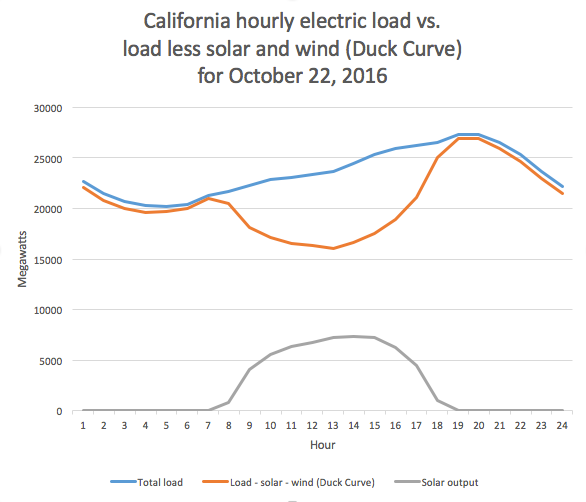During a power outage, a home generator or energy storage system is your friend. Stationary batteries provide clean, reliable backup energy. If you own solar panels, they also solve one of the fundamental issues you probably face: a lack of means to store excess power produced during the sunniest parts of the day. Learn more about home backup batteries and how to interpret their specs to help you in your research.
As stated in the dcbel glossary:
ESS stands for “energy storage system.” Many options exist to store electricity: flywheels, thermal, even compressed air energy storage. But batteries are our main focus.
- On-grid: Cycling battery, for daily usage.
- Off-grid: Backup battery, working only when grid is lost. Cannot synchronize with grid frequency.
Two use cases
The definition above implies that a backup battery can be used to complement the needs of a typical home while also being appropriate for off-grid applications.
Most homeowners opt for what’s known as solar-plus-storage. This scenario sees the battery get charged by solar panels, specifically the excess current produced during peak sun hours. The beauty of this setup is that those peak hours occur around midday, when many homes experience their lowest energy needs. Stationary batteries ensure that solar power produced during this time doesn’t go to waste.
Duck curve
In the graph below, we can see that the demand for power in California tends to be at its lowest as solar output is at its highest. Later, a large spike in demand occurs between 5:00 and 6:00 p.m., which translates to higher electricity prices during that period. This demand curve resembles the side profile of a duck, which is where the chart gets its name from. As more homes adopted solar panels during the previous decade, the curve has become more pronounced. Battery storage is indispensable for combatting this problem because it can take some of the burden off of power plants and the expensive daily ramp-up and ramp-down required to satisfy this altered curve.

By ArnoldReinhold – Own work based on data from caiso.org, CC BY-SA 4.0
No solar? No problem.
What if you don’t have solar panels? A home backup battery is still an option. Charging would be accomplished by drawing power from the grid. If time-of-use (TOU) rates are implemented by your utility, a battery can allow you to optimize your electricity usage for cost by charging during the least expensive time of day and discharging (powering your home) when rates are at their highest.
Blackout protection
When the grid goes down, a battery can kick in and seamlessly provide power to your home. If photovoltaic panels are part of the equation, even a power outage that lasts several days can be mitigated by solar panels activated during the day, and reserved battery power filling in at night.
Comparing batteries with diesel generators
Most homeowners envision diesel generators as solutions to pesky blackouts. While gas-powered generators cost less than stationary batteries, there are other factors to consider. They feature a motor that requires regular maintenance, like a vehicle with an internal combustion engine. Oil changes, servicing, frequent test runs, and visual inspections are necessary to ensure that the unit is ready to perform in the event of a power outage. Longer outages may also expend all fuel in the tank, forcing you to procure more and perform a refill when it might not be safe to do so.
Finally, gas-powered generators release greenhouse gases, and carbon monoxide poisoning can also be a concern. Dozens of people were hospitalized for this reason as Hurricane Ida passed through Louisiana and disrupted the power supply. This is why it’s crucial always use generators outdoors, at least 20 feet away from any dwellings.
Batteries do not suffer from any of these disadvantages. They are typically guaranteed to work for thousands of cycles without any maintenance, and are emission-free so they can be placed anywhere.
Choosing a battery
There are battery options that suit many budgets and energy consumption profiles. Common specs you’ll see as you browse for one include capacity, power rating, depth of discharge, round-trip efficiency and warranty. Let’s break it down and then see how these concepts apply to an LG battery currently on the market.
Capacity: The amount of electric charge a battery can deliver at its rated voltage. The capacity of a home backup battery can be measured in kilowatt-hours (kWh).
Power rating: The maximum amount of electricity that can be output at a single time, in kilowatts (kW).
Depth of discharge (DoD): The total amount of energy that is discharged from a battery relative to its overall capacity. Manufacturers list a DoD amount to aim for before recharging; exceeding it will shorten the battery’s overall lifespan. Therefore, a higher number is better.
Round-trip efficiency: A measure of how efficiently a battery can convert incoming electricity into chemically-stored electricity and then back into usable electricity. Also called energy conversion efficiency.
Warranty: Manufacturers usually guarantee that their battery will not degrade beyond a certain capacity during the period specified in the warranty.
Example: The LG Chem RESU 10H has a total energy capacity of 9.8 kWh, and 9.3 kWh worth of usable energy. It boasts a maximum power rating of 5.0 kW. With a maximum DoD of 95%, no more than 8.8 kWh should be discharged before recharging. A 94.5% round-trip efficiency means that for every 10 kWh of electricity you put into the battery, you’ll receive 9.45 kWh of output. It’s warrantied to retain at least 60% of its capacity in 10 years or 24 megawatt-hours, whichever comes first.
Take charge of your power needs
Stationary batteries can fill most or all of the gaps present in your home energy situation and provide clean, reliable and consistent power when you need it most. If you have further questions about batteries or other green energy technology, have a look at other stories on our blog and use the chat application on this page to talk to one of our experts.
Sources:
https://en.wikipedia.org/wiki/Duck_curve
https://www.cleanegroup.org/wp-content/uploads/Energy-Storage-101.pdf
https://www.cmcelectrical.com/blog/2019/01/4-tips-for-maintaining-your-home-generator/
https://www.infiniteenergy.com.au/products/solar-batteries/lg-chem-resu-faqs/
https://www.solarsource.com/blog/solar-plus-storage-is-starting-to-make-sense
https://www.solarreviews.com/blog/best-solar-batteries-tesla-vs-sonnen-vs-lg-chem-vs-byd
https://news.energysage.com/lg-chem-resu-battery-review/
https://www.lg.com/us/business/download/resources/BT00002151/180830_LG_ESS_Datasheet.pd
https://news.energysage.com/depth-discharge-dod-mean-battery-important/
Photo by Fabrice Villard on Unsplash


